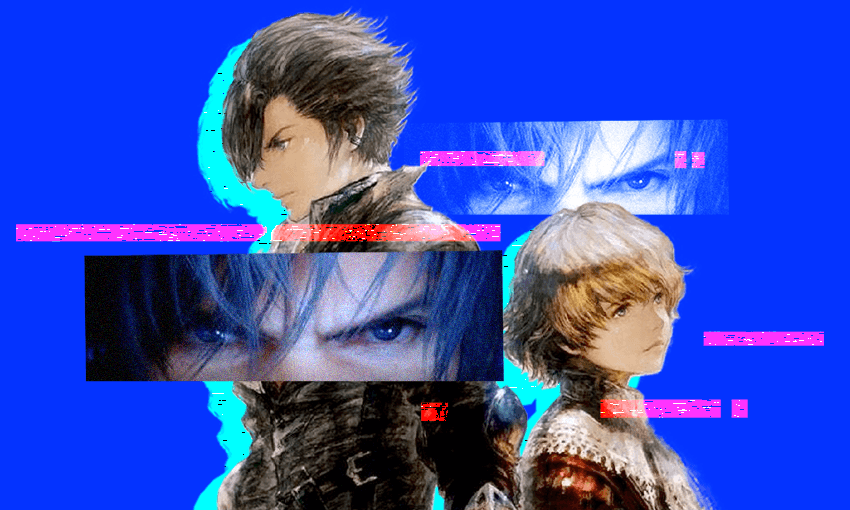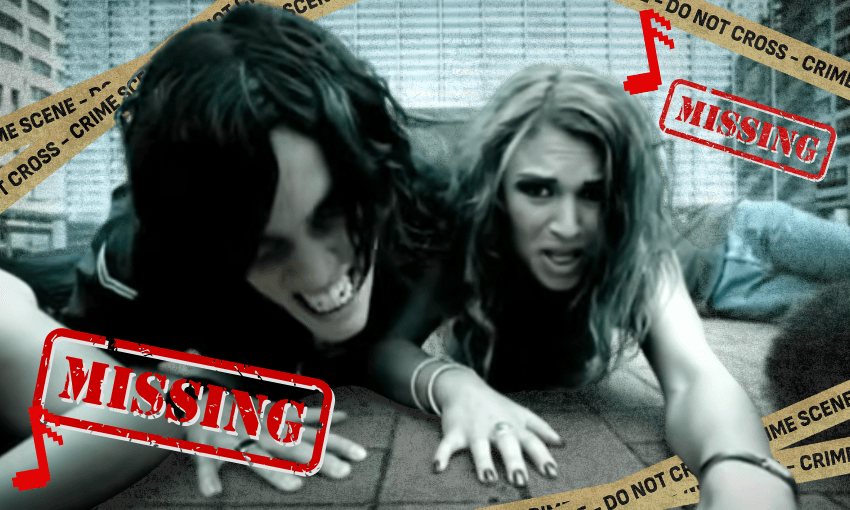The latest entry in one of gaming’s biggest franchises does what should be impossible in 2023: it feels just like a Final Fantasy game. Sam Brooks reviews.
When I booted up Final Fantasy XVI, a game over half a decade in the making, I scrambled to find something to compare it to. Previews have compared it to Game of Thrones, saying that the game draws on that series’ grimdark fantasy lore and nihilist view of how people scramble for power.
What I actually found, only a few hours in, is that the game reminded me of countless other games. There are the previous entries in the franchise, of course, though it still surprised me at how the game reached several decades back to the 8 and 16-bit days for inspiration (and it’s worth noting that these games were just as grim as Game of Thrones ever was). There’s the obvious touchpoint of The Witcher 3, one of the most successful and influential games of all time. Then there are the less obvious ones – Metal Gear Rising, the Dynasty Warriors series, even Bioware’s RPGs – that the game seems to have taken notes, if not entire concepts and play styles from.
But the thing that Final Fantasy XVI feels most like? An honest-to-god Final Fantasy game.
Enough about what the game is like, though – here’s what the game is.
Final Fantasy XVI is, like every other game in the series, a completely standalone story. It’s set in a high fantasy world, divided between six nations who hold power through their access to Crystals (essentially massive skyscrapers made of crystal) and Dominants (humans who can turn into Eikons, summons the size of kaiju). The Blight, essentially mass deforestation and viral plague, has been consuming the land for decades. The focus of the story is Clive Rosfield, guardian to his younger brother Joshua, the Dominant for Eikon Phoenix but himself disinherited from the throne, who sees his kingdom destroyed and goes on a roaring rampage of revenge.
If that sounds incomprehensible, that’s classic Final Fantasy for you. Perhaps the one thing that links the franchise together – other than the countless easter egg references to previous games – is that they throw the players into dense worlds and expect them to figure out where they are on their own. If you swim, great. If you sink, then at least you’ve got some pretty things to look at on your way down. (Although, in fairness, you can hit the middle button at any point, and a helpful glossary of terms of reference for the scene you’re in will pop up. Every game this dense should have this option.)
The story unravels over 50 hours or so, spinning the respective plates of political intrigue, character tragedy and fantasy nonsense, while only just threatening to teeter into “too dark” territory – there’s probably more swear words in this game than all the other games released this year combined. Thankfully, while the story gets darker than probably any Final Fantasy since the 2D days, it never goes full Game of Thrones in its nihilism. There is always a lightness, a glimmer of hope that the party of outlaws the dour (but never depressive) Clive has arranged around him will triumph.
Another thing the franchise is known for is its polish. Final Fantasy XVI has to be one of the most finished triple-A games I’ve played in the past five years, with the possible exception of its predecessor, FFVIIR. Not only did I encounter barely a glitch in the unpatched pre-release build I played, there wasn’t a single aspect of the game that didn’t feel thought through. The game ditches a full open world concept in favour of a series of hubs that are explored and opened up throughout the game (again, similar to The Witcher 3). The hollowed out villages of Rosaria feel as vibrant and as alive as the little desert merchant hamlet Dahamil, and as exciting to explore as any of the sprawling fields, deserts and forests that connect the two. It’s the rare “open world” game that feels deeper and more complex the more you explore it.
This extends to the battle system, which might be the thing that alienates classic Final Fantasy fans, although it needs to be pointed out that the franchise has changed battle systems substantially with every game. The battle style of this game can be best described as if someone tried – bless their souls – to make a crossover of Final Fantasy VII Remake and Devil May Cry. It’s high-octane and fast-paced, with a heavy reliance on active ability customisation and learning enemy attack patterns. If you want a challenging, action-heavy experience, the game is set up for you to experience that, but if you want a more standard Final Fantasy experience where a few button presses set you up for audiovisual fireworks, you can toggle a few options, equip a few accessories and experience that too.
I won’t say that it’s the best battle system I’ve ever encountered in a Final Fantasy game system, or even an RPG – I’m still a sucker for the snail’s pace tactics of Final Fantasy X – but it’s definitely the best action-RPG battle system I’ve ever encountered. Not only does the game introduce battle elements gradually over the first 15 hours, but each adds depth and complexity without ever making battles feel complicated. The player is given a variety of roads to take through battles – if they want to be quick-hitting magic machines or heavy-hitting tanks, they can do either and make it through the game happily. It also nails the crucial thing that any vaguely reflex-based, button-mashing combat system has to do: it feels really good to win, and when you pull off a difficult combo or precision dodge, it feels great. That’s to say very little of the boss fights, which is where the game dips into full on Metal Gear Rising/Bayonetta mode, and to say any more would be spoiling.
The Final Fantasy games are not flawless, but they have always succeeded at delivering pure spectacle (the trailer for Final Fantasy VIII knocked our socks off at the time, and still kind of leaves me sockless, honestly). This is most obvious with how well each game holds up, even decades after the fact. While the graphics may eventually become dated, they still show excellent execution of design concepts – look how the sprite work of any game between VI and IX, for example, blends with the pre-rendered backgrounds, or how the music sets the tone perfectly for each environment. The stories may be silly, dense, or outright bad, but the spectacle has never disappointed.
It’s not a stretch to say that Final Fantasy XVI is the best-looking Final Fantasy game yet. Of course it is, it’s on the best hardware the series has ever had, with a completely new graphics engine. What’s most heartening, though, is that it doesn’t just look like a game with a state-of-the-art graphics engine, it looks like a game with a proper design philosophy, with moments that are intended to, once more, blow your footwear off. Yes, it is dark (I turned my brightness up to near maximum), but the game is full of moments that make you remember why you’re playing a fantasy game: has a crystal in a video game ever looked this good? And on the flipside, has a tentacle-monster spewing toxic gas and venom ever looked so disgusting? No, to both. A great graphics engine helps a game look pretty, but a proper design philosophy ensures it looks beautiful. (See also: The Legend of Zelda: Tears of the Kingdom).
At its peak, Final Fantasy was a cultural juggernaut, one that could crossover with Disney (definitely not at its peak) without people blinking an eye. That was two decades ago, however. Since then, gaming has been flooded with the antithesis of what Final Fantasy was – games that need DLCs and patches to fill them out, games that are cheap cash-ins and cheaper sells. Frankly, it’s been nearly 15 years since the franchise had a game full of moments like the ones that made it a cultural juggernaut – the opening bomb sequence of VII, landing on the beach in VIII, the heist of the princess in IX, the blitzball tournament in X. Each of those games has that chase-the-dragon moment; the moment that got you hooked on Final Fantasy, that you’ve been chasing ever since.
This game is full of moments like those. In fact, there’s a quite literal chase-the-dragon moment that is up there as an all-timer. For the first time in a long time, we have a Final Fantasy that first-time players can come to and have that moment. Compare it to whatever you like, it doesn’t matter: Final Fantasy XVI is more than just a great game, it’s a great Final Fantasy game.
Final Fantasy XVI is available now on Playstation 5. The game was completed once for review.



